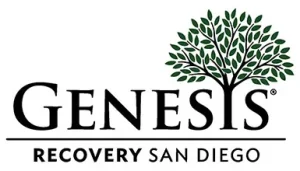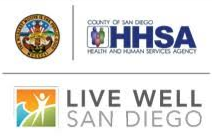Suboxone was developed as a medication to treat opioid addiction. It contains buprenorphine and naloxone, a partial opioid agonist and an opioid antagonist respectively. Together, buprenorphine and naloxone ease the withdrawal process while also counteracting the opioid’s effects on the brain. Since its approval for prescription use, Suboxone has proven its effectiveness in returning recovering individuals to a life free of opioid dependence. However, Suboxone also has a risk of addiction and dependence when it is abused or a patient suddenly stops taking it, and can lead to withdrawal symptoms.
Causes of Suboxone Withdrawal
Partial opioid agonists work by activating opioid receptor sites in the same way as their full agonist counterparts, just to a lesser degree. This allows the partial opioid agonists to ease withdrawal, without creating a ‘high’ or producing mind-altering effects. If Suboxone is taken before the full opioid agonist is out of the bloodstream, or in too high of a dose, it can cause withdrawal. Similarly, if the body has a high physical dependence on opioids and the patient stops taking Suboxone, withdrawal can occur. With repeated use or abuse, the body becomes dependent on Suboxone to maintain normal functioning. When Suboxone levels begin to drop in the user’s system, the system is thrown off-balance and the brain sends craving sensations until the needs are met.
Signs and Symptoms of Suboxone Withdrawal
The severity and duration of the withdrawal symptoms can fluctuate depending on the individual, and how long they have been taking Suboxone. Other factors that influence the full extent of the symptoms include the average dose of Suboxone taken by the individual, any pre-existing medical conditions, whether it was mixed with other drugs or alcohol, and the presence of mental health disorders.
Suboxone withdrawal signs and symptoms can include the following:
- Nausea
- Muscle/body aches and pains
- Insomnia
- Anxiety, depression, and irritability
- Fevers, chills, and other flu-like symptoms
- Sweating
- Runny nose
- Diarrhea
- Cravings
A Timeline of Suboxone Withdrawal Symptoms
Certain symptoms emerge quickly and subside while others persist. The timeline of how Suboxone withdrawal symptoms present themselves can include:
- With 12 hours of quitting Suboxone, the individual will start experiencing cravings along with muscle aches and possibly anxiety, insomnia, runny nose, or sweating.
- In the first two to three days, symptoms intensify and are at their worst. Diarrhea and vomiting usually also occur in addition to abdominal cramps, goosebumps, increased heart rate, and dilated pupils.
- After a week the more severe physical symptoms, such as body aches and pains, usually ease off.
The psychological symptoms such as depression and cravings may remain up to several months afterward. For those who have stopped taking Suboxone, it is critical to be in contact with a medical professional as relapse can occur.
Coping with Suboxone Withdrawal
There are various strategies available to help cope with the stress of Suboxone withdrawal. Rather than engaging in maladaptive behaviors that temporarily relieve stress, such as drug or alcohol use, individuals who engage in positive, healthy behaviors will better manage the stress and maintain recovery. These healthy habits include:
- Exercise: Regular exercise can bring remarkable changes not only to the body, but also to the mind. Exercise reduces levels of the body’s stress hormones and stimulates the production of endorphins which are natural mood elevators.
- A Wholesome Diet: Proper nutrition during withdrawal is crucial. Even if the individual doesn’t feel hungry, it is essential to keep in mind that the bodily discomfort can be soothed by fruits, vegetables, and grains. Nourishing the body also nourishes the mind.
- Social Activity: Keeping in touch with friends and family, especially during difficult times, can help alleviate stress. It can be extremely beneficial to reach out to others for support.
- Relaxation time: Finding the time to relax is absolutely necessary during recovery, and helpful in managing withdrawal symptoms. This can include finding a hobby such as writing, arts, or crafts. Making time to do the things you love not only serves as a distraction from cravings, but also invites joy into the life.
- Adapting to the situation: Last but not least, it’s important to adopt a positive outlook to the recovery process and accept that withdrawal is a part of it.
Suboxone Withdrawal Treatment
Suboxone detoxification can sometimes take place in the home, but it is far more comfortable to undergo the process at a treatment center like Genesis Recovery. There are many benefits to medically-supervised detox and selecting a therapeutic treatment plan. For example, highly educated, experienced treatment professionals can create a unique treatment plan for the individual which will lead to increased success in the future and continued abstinence.
Additionally, personal therapy, group therapy sessions, peer support or 12 Step meetings, holistic therapies, alternative therapies, and individual case management are offered in treatment plans as well as long-term aftercare and support. Those who have the most success in recovery and avoiding relapse take full advantage of the treatment opportunities, and stay actively engaged in treatment for years even after transitioning into independent living.

